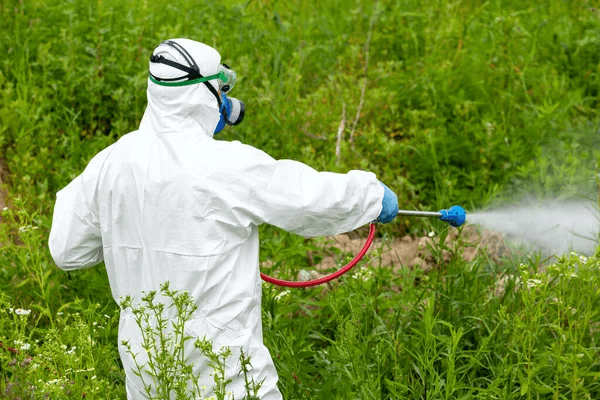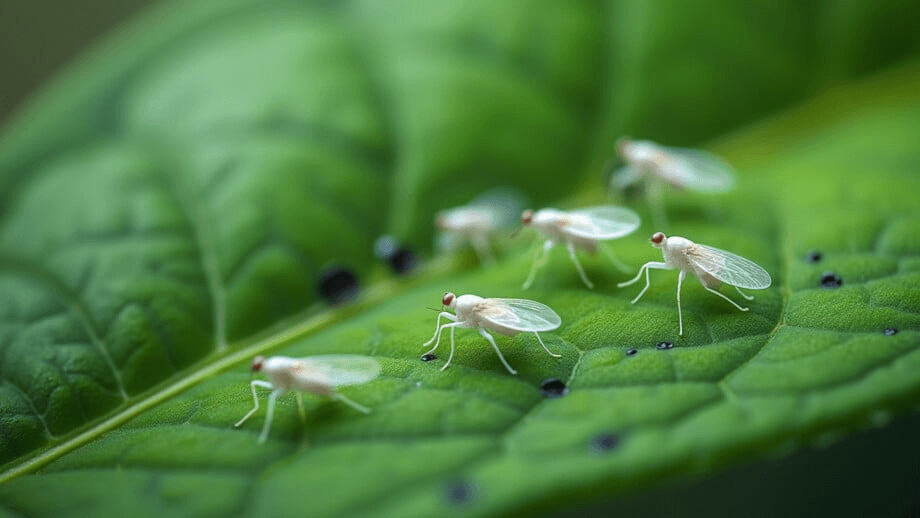
Pesticides are meant to stop pests in their tracks. But what happens when they don’t? For farmers growing high-value crops like strawberries, tomatoes, and flowers, a failed spray can mean disaster, lost money, ruined harvests, and endless frustration. The truth is, some pests fight back.
By examining what went wrong, farmers and crop experts can develop better strategies to protect their plants. In this article, we explore what pesticide failures can teach us, particularly in the context of persistent pests like whiteflies.
The Case of Whitefly Resistance

Whiteflies, particularly Bemisia tabaci, are small insects that damage crops worldwide. At first, growers had success with neonicotinoids like imidacloprid. But rapid resistance soon emerged. A study in Pakistan showed that after only five generations of spraying, resistance increased up to 86-fold for imidacloprid and a staggering 127-fold for buprofezin in lab tests.
Fieldwork in India and Turkey also found that repeated use of the same insecticides, poor spraying habits, and mixing too many chemicals led directly to control failures. In the US, whitefly resistance became widespread in cotton when farmers relied on pyrethroid–organophosphate mixtures.
These failures show us that consistent use of one chemical class makes pests stronger. Monitoring resistance and rotating chemistries is not optional; it’s critical.
Understanding Control Failures vs. Resistance
It’s important to separate insecticide resistance from a real control failure. Resistance refers to a pest’s genetic ability to survive treatment; failure means the pesticide no longer works in the field. One report pointed out that while many pests have resistance, actual failures when control dips below acceptable levels are less often recorded.
But whiteflies are a clear exception. In Pakistan and other countries, resistance quickly translated into real-world crop losses. This shows that even a little resistance in the lab can lead to big problems in the field. Early detection and proactive limits, especially with high‑value crops, can prevent the collapse of control methods.
The Hidden Threat: Honeydew and Secondary Damage
Whiteflies don’t just feed on plant sap. They excrete sticky honeydew that supports mold. Alarmingly, that honeydew can carry tiny amounts of pesticide, exposing other insects to low doses, driving resistance even faster.
These leftovers can also harm beneficial insects, upsetting the ecological balance. Pest control isn’t just about killing pests; it’s about preserving nature’s helpers.
Alternatives and Integrated Pest Management
Thankfully, pesticide failure has led to new approaches that go beyond chemicals.
- Biological control: In some cases, fungi like Beauveria and Paecilomyces have killed up to 90% of whitefly larvae in greenhouse tests. Natural agents are effective and safer for farm workers and the environment.
- Systemic insecticides and rotation: Products like flupyradifurone show promise. They are taken up by the plant and poison insects through feeding, and they’ve been effective even where resistance to older classes exists.
- Plant resistance: Breeding cultivars with natural defenses like physical barriers (trichomes) or chemicals offers another layer of protection and helps reduce the need for frequent spraying.
- IPM strategies: In Southeast Asia, delaying pesticide sprays early in the season allowed natural predators to keep pest numbers low. That practice reduced use while maintaining yields, proving that less can be more.
Practical Lessons for Growers
Here’s what growers can do right now:
- Test often – Know when resistance begins. Small lab or field bioassays reveal trends before failure.
- Rotate actives – Don’t use the same chemical class all season. Rotate with different modes of action and include non-chemical options.
- Use smart timing – Early sprays can backfire, killing predators and enabling pests like planthoppers or whiteflies to bloom.
- Include biologicals – Fungal products, predatory insects, and resistant varieties can work with chemicals, not against them.
- Educate and follow labels – Poor mixing, timing, and dosage are common causes of failure. Always read instructions carefully and apply the product the right way.
A Closer Look: Controlling Whiteflies
When controlling whiteflies, it’s essential not to rely only on powerful chemicals. Research shows that mixing systemic insecticides with biological agents and cultural tools, like reflective mulch, can balance pest reduction while delaying resistance. For instance, soil-applied neonicotinoids are absorbed throughout the plant, protecting new growth. But regular sprays on emerging leaves only kill current pests; new ones arrive and escape treatment. So, combine soil drenches, foliar sprays, periodic biologicals, and crop rotations for stronger, long-lasting control in high-value crops.
Conclusion
Pesticide failures in high‑value crops, especially whiteflies, teach us a lot. Repeated use of the same chemistry leads to resistance, control breakdowns, and crop losses. But failure isn’t the end; it’s a signal to adapt.
By rotating chemical classes, testing for resistance, and boosting pest control with biology and plant defenses, growers can stay ahead. Integrated Pest Management isn’t a buzzword; it’s the best way to protect yields, the environment, and the farm’s bottom line. When we learn from past failures, we can build resilient systems that last.
Jordan Avery
Related posts
Stay connected
- How LoveOn Chat Is Becoming the Most Versatile AI Companion for Digital UsersThe internet keeps shifting toward hyper-personal interaction, and AI companions are at the center of this shift. What used to be simple chatbots are now evolving into emotionally aware, adaptive, and multi-functional digital partners. Among the new generation of platforms, LoveOn Chat is becoming one... The post How LoveOn Chat Is Becoming the Most Versatile […]
